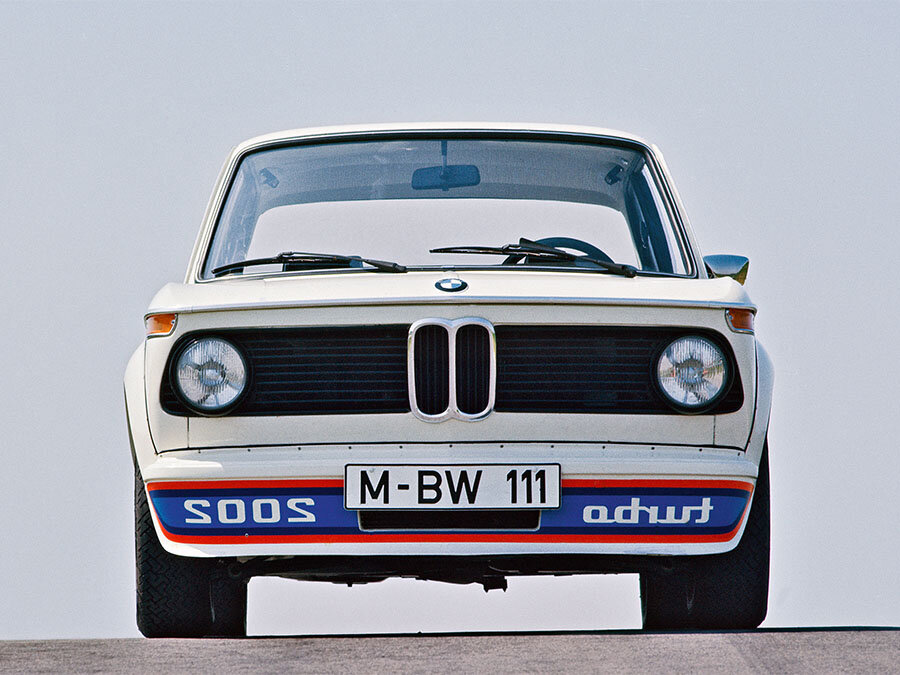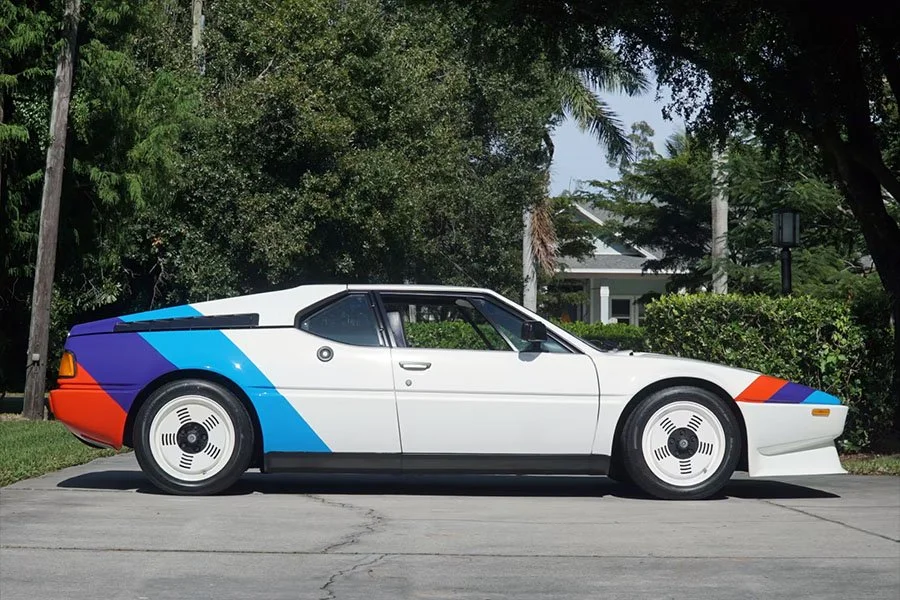Guide: BMW E20 2002 Turbo - a Historical & Technical Appraisal
/BACKGROUND
At the Paris Motor Show in October 1972, BMW unveiled a styling concept with a turbocharged version of the two-litre M10 engine.
The Paul Bracq-designed E25 Turbo had a mid-mounted engine, Gullwing doors and the kind of wedge profile that epitomised early 1970s dream cars.
Less than twelve months later, a turbocharged BMW that you could actually buy was presented at the Frankfurt Motor Show.
Developed by BMW Motorsport, the 2002 Turbo was a forced induction version of the popular E20 2002 Tii which, in addition to its hot engine, came with a host of additional performance modifications. Most memorable was its wide-arched and heavily spoilered body that usually came emblazoned with BMW Motorsport decals.
Unfortunately, the car’s short production life coincided with the energy crisis which massively affected sales.
Between January 1974 and July 1975, a mere 1660 were built.
CHASSIS
2002 Turbos were constructed on the regular Munich production line.
They used an uprated version of the Tii’s unitary steel chassis with reinforced front frame rails and a strengthened floor area around the rear suspension mounting points.
The boot floor was modified to accommodate a bigger spare wheel and a special 70-litre fuel tank was installed.
Aside from a thicker 20mm anti-roll bar and Boge shocks, the MacPherson strut front suspension with lower lateral arms and coil springs was lifted directly from the Tii.
More substantial changes were made at the back. In addition to a thicker 16mm anti-roll bar and Boge shocks, the 2002 Turbo got reinforced semi-trailing arms and unique coil springs with three different spring pads to adjust the ride height.
The rear wheel bearings, hubs and stub axles were also beefed up.
Standard size 10.08-inch front brake discs were retained but were now ventilated for the Turbo. Larger 10-inch drums were installed at the back.
The 13-inch steel wheels measured 5.5-inches wide and were originally shod with either Michelin XWX or Pirelli Cinturato tyres.
ENGINE / TRANSMISSION
At the heart of the new car was a 2002 Tii engine equipped with a KKK BLD turbocharger running a boost pressure of 0.55 bar.
Designed by Alex von Falkenhausen, the M10 engine featured an iron block and aluminium alloy single overhead camshaft two-valve head.
It was longitudinally mounted in the chassis and drove the rear wheels.
Bore and stroke went unchanged from the Tii at 89mm and 80mm respectively. Overall displacement was 1990cc.
The Type M31 engined fitted to the 2002 Turbo had its compression reduced from 9.5 to 6.9:1 in order to prevent knocking.
New Kugelfischer mechanical fuel-injection featured an integrated boost enrichment feature. A supplementary oil cooler was also added.
Power was up by 40bhp on the Tii with 170bhp at 5800rpm. The torque rating was 177lb-ft at 4000rpm.
Transmission was via a Getrag four-speed gearbox with single dry plate clutch and ZF limited-slip differential.
BODYWORK
The familiar BMW E20 exterior was transformed with a number of striking additions.
BMW removed the front bumper and fitted a custom nose panel equipped with a deep chin spoiler.
Wheelarch flares were riveted in place and necessitated some cutting of the rear fenders.
Both the front spoiler and wheelarch extensions were colour-matched to the body.
A black rubber spoiler was mounted on the bootlid and a ‘turbo’ badge was stuck on above the left-hand tail light.
The overwhelmingly majority of cars came fitted with blue and red Motorsport stripes on the front spoiler and down each flank. Reversed ‘2002’ and ‘turbo’ graphics were originally added to the front spoiler decal.
Two colours were available: Chamonix White or Polaris Silver.
INTERIOR
Like the rest of the BMW 02 range, Turbo cockpits were well laid out with good visibility and plenty of space.
Special equipment for this flagship model included sports seats in black leatherette and a three-spoke steering wheel.
The Turbo also came with a VDO boost gauge located in a uniquely expanded central binnacle alongside the clock.
The main instrument binnacle directly behind the steering wheel had a special red fascia. It housed a combined fuel level / water temperature gauge plus a speedometer and rev counter.
Various toggle switches were located either side.
A central console that connected the dash and gear lever was home to an ashtray, a couple of warning lights and a radio (if specified).
WEIGHT / PERFORMANCE
Weight was 1080kg.
BMW quoted a top speed of 130mph and 0-62mph time of seven seconds.
At 4000rpm, the boost suddenly kicked in which made getting the most out of the car something of a black art. Inexperienced drivers often ended up in the scenery.
OPTIONS
Optional extras included Bilstein shocks, 6 x 13-inch alloy wheels, thicker anti-roll bars (22mm front, 18mm rear) and a five-speed Getrag gearbox with Porsche synchromesh instead of the Getrag synchromesh used on the four-speed ‘box.
Buyers could also specify Motorsport stripes, laminated glass, tinted glass, a passenger side wing mirror, a lockable fuel filler cap, a manual or electric sunroof, fog lights and headlight wash/wipe.
Cockpits could be enhanced with a heated rear windscreen, rear seat belts, velour floor mats, a lockable glove box and radio.
There was no electric window option.
LAUNCH
The 2002 Turbo was unveiled at the Frankfurt Motor Show in September 1973 and production started in January 1974.
Unfortunately, between the car’s launch and the start of production, the energy crisis hit.
Problems began when Arab OPEC members announced an embargo on oil sales to the USA, UK, Canada, Japan and the Netherlands. The embargo was in response to the USA's support for Israel in the Yom Kippur War where Egypt and Syria, with the support of other Arab nations, had begun a military campaign to regain Arab territories lost during the 1967 Six Day War (when Egypt, Syria and Jordan had been the aggressors).
Oil prices rose exponentially and remained at elevated levels for the next two years.
The number of buyers for high performance cars shrunk dramatically. Although the 2002 Turbo didn’t have a large capacity V8 or V12 engine, it still suffered as fuel economy was suddenly the only game in town.
PRODUCTION CHANGES
Although the 2002 Turbo was only built until July 1975, a couple of minor changes were made during production.
The reversed ‘2002’ and ‘turbo’ graphics designed to be read when seen from a rear view mirror caused something of a furore among road safety campaigners in Germany. As a result, BMW removed them from the front spoiler stripes soon after production began.
The other change was introduced from chassis 4291213 when the exhaust pipe was moved from the right-hand side to the centre.
PRODUCTION ENDS
All 2002 Turbos were built in left-hand drive as there wasn’t sufficient clearance near the exhaust manifold for the right-hand drive steering column.
In total, 1672 were built, twelve of which were pre-production cars constructed between July and December of 1973.
Text copyright: Supercar Nostalgia
Photo copyright: BMW - https://www.bmw.com









































